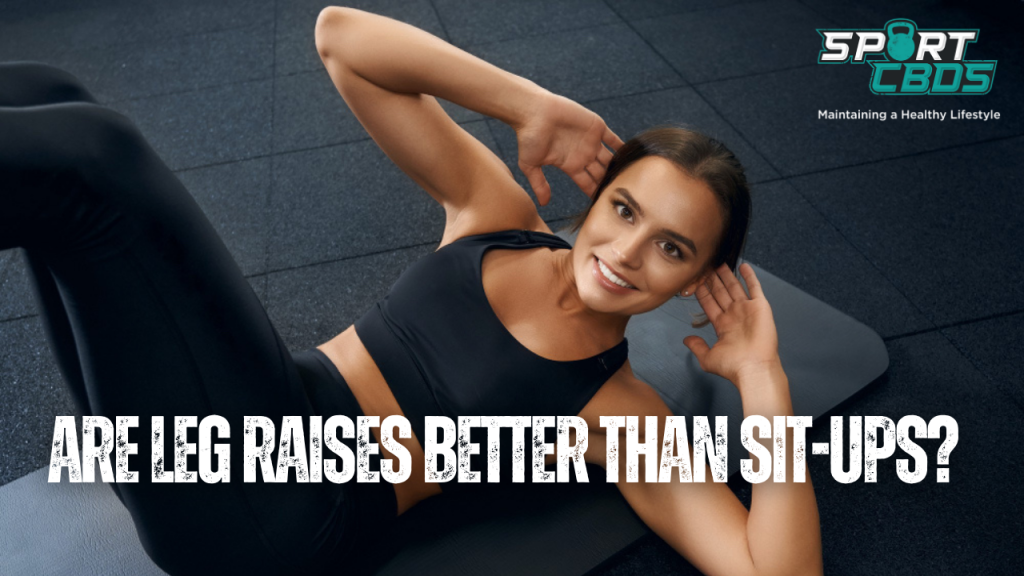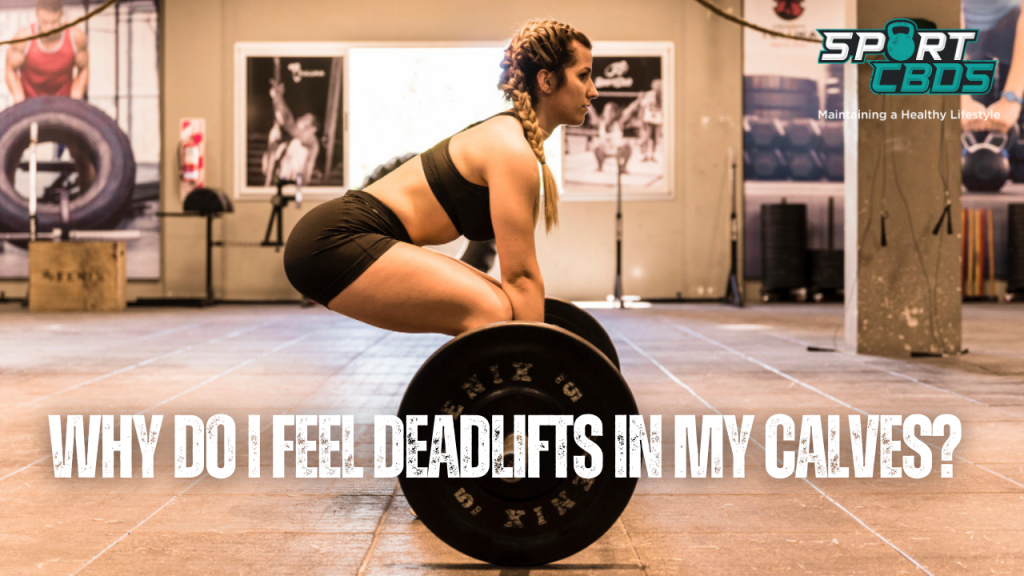
Are Leg Raises Better Than Sit-ups? Find Out Here
Welcome to the timeless debate in the fitness community: do leg raises hold an advantage over sit-ups? This question has persisted among fitness aficionados and experts alike.
In this comprehensive article, we’ll delve into the intricacies of leg raises and sit-ups, examining the muscles they engage, the advantages of each, their distinct body mechanics, and more.
By the end of the post, you’ll gain a clear insight into which exercise might best suit you and your fitness objectives.
Are Leg Raises Better Than Sit-ups?
The question of whether leg raises are better than sit-ups ultimately depends on the individual’s fitness goals and personal preferences. Leg raises predominantly target the lower abdominals and hip flexors, while sit-ups engage the entire rectus abdominis muscle and activate the hip flexors and lower back muscles as well. If your objective is to focus on the lower abdominals or minimise lower back involvement, leg raises might be the more suitable choice. However, if you’re looking to engage the entire abdominal region and incorporate a wider range of muscles, sit-ups could be more advantageous. It’s essential to consider factors such as your fitness level, injury history, and the biomechanics of each exercise to determine the best option for your workout routine. Ultimately, incorporating both exercises into your routine could provide a well-rounded approach to strengthening your core muscles and achieving your desired fitness outcomes.
Understanding the Muscles Engaged by Leg Raises and Sit-ups
Before we embark on a comparison of the two exercises, let’s familiarize ourselves with the muscles they engage. Both leg raises and sit-ups primarily aim to work the abdominal muscles, but they each concentrate on different regions of the abs.
Leg raises predominantly target the lower abdominals, specifically the rectus abdominis and the hip flexors. They also involve the oblique muscles to a certain extent.
Conversely, sit-ups engage the entire rectus abdominis muscle, which extends from the pubic bone to the ribcage. Furthermore, sit-ups activate the hip flexors, the muscles accountable for hip flexion, and can even work the lower back muscles when executed with proper form.
Comparing the Advantages of Leg Raises and Sit-ups
Understanding the specific benefits of each exercise will help you make an informed decision about which one to include in your routine.
Leg Raises:
- Highly effective for focusing on the often-overlooked lower abdominal muscles, such as the rectus abdominis and hip flexors
- Contributes to enhanced hip flexibility and mobility
- Places minimal strain on the neck and lower back, reducing the risk of injury
Sit-ups:
- Engages the entire rectus abdominis muscle, offering a more comprehensive abdominal workout
- Aids in boosting overall core strength and stability, which is crucial for daily activities and other exercises
- Can be easily modified to target different areas of the abs, such as twisting sit-ups that engage the oblique muscles
The superiority of one exercise over the other depends on your personal goals and requirements. Leg raises might be a better choice if you’re aiming to strengthen your lower abs and enhance hip mobility, whereas sit-ups may be more suitable for those looking to improve overall core strength and stability.
Body Mechanics: Delving into the Differences Between Leg Raises and Sit-ups
A vital factor to contemplate when comparing leg raises and sit-ups is the distinction in body mechanics. Leg raises entail lying flat on your back and elevating your legs toward the ceiling, maintaining a straight posture. This motion predominantly focuses on the lower abs and hinges on hip flexion.
Conversely, sit-ups require lying on your back and elevating your upper body towards your knees, flexing at both the hips and the spine. This action engages the entire rectus abdominis muscle, along with the hip flexors and lower back muscles.
Comprehending these disparities in body mechanics can aid you in selecting the exercise that best corresponds to your specific objectives and preferences.
Determining Your Fitness Goals
Your fitness aspirations play a substantial part in deciding which exercise suits you best. If your main aim is to concentrate on your lower abs and enhance hip mobility, leg raises might be the superior choice. However, if you want to develop overall core strength and stability, sit-ups may be more fitting.
It’s vital to stay realistic about your objectives and concentrate on exercises that facilitate their achievement. Additionally, it’s crucial to uphold a well-rounded workout regimen, integrating various exercises that target diverse muscle groups.

Alternative Abdominal Exercises
While leg raises and sit-ups are both efficient exercises for abdominal muscles, there are alternative options to explore, such as:
- Planks
- Russian twists
- Bicycle crunches
- Mountain climbers
- Hanging leg raises
Incorporating an assortment of exercises into your workout routine can help you focus on different regions of the abdominals, ensuring comprehensive core strength and stability.
The Significance of Compound Exercises in a Balanced Workout Routine
While isolation exercises like leg raises and sit-ups are vital for concentrating on specific muscle groups, it’s imperative not to underestimate the value of compound exercises in your workout routine. Compound exercises engage multiple muscle groups at once and can help enhance overall strength, stability, and functional fitness. Some examples of compound exercises that also involve the core muscles include:
- Squats
- Deadlifts
- Lunges
- Pull-ups
- Push-ups
By integrating a combination of isolation and compound exercises in your regimen, you’ll be on the path to achieving a well-rounded and balanced workout program.
Related: Why Do My Feet Hurt When Doing Planks?
Injury Risks: Assessing the Safer Exercise
When contrasting leg raises and sit-ups, it’s crucial to evaluate the potential risk of injury. Both exercises, when executed incorrectly or without proper form, can lead to discomfort or injury.
Leg raises, if not carried out with control and appropriate form, can cause strain on the lower back. To minimize this risk, ensure that you maintain a neutral spine and engage your core muscles throughout the movement.
In contrast, sit-ups can place strain on the neck and lower back if not performed correctly. To reduce this risk, concentrate on using your abdominal muscles to lift your upper body and avoid pulling on your neck. It’s also essential to maintain proper alignment throughout the movement and not to hyperextend the lower back.
As long as you practice good form and pay attention to your body, both exercises can be safe and effective additions to your workout routine.
Merging Leg Raises and Sit-ups in Your Workout Routine
So, why not enjoy the best of both worlds? Blending leg raises and sit-ups in your workout routine can offer a comprehensive abdominal workout that targets the upper and lower abs, as well as the obliques and hip flexors.
Consider alternating between leg raises and sit-ups or including variations of each exercise to maintain variety and challenge. By doing so, you’ll be on track to developing a robust, well-defined core.
Beginner Ab Workout Routine
Remember to maintain proper form throughout each exercise and listen to your body. Adjust the sets, reps, or duration as needed based on your current fitness level. As you progress, you can increase the sets, reps, or duration, or incorporate more advanced variations of the exercises.
Warm-up: 5 minutes of light cardio (e.g., brisk walking, jumping jacks, or jogging in place)
- Leg Raises
- Sets: 3
- Reps: 10-12
- Rest: 30-45 seconds between sets
- Modified Sit-ups (bent knees)
- Sets: 3
- Reps: 10-12
- Rest: 30-45 seconds between sets
- Plank
- Sets: 3
- Duration: 20-30 seconds (or as long as you can maintain proper form)
- Rest: 30-45 seconds between sets
- Russian Twists (with or without a light weight)
- Sets: 3
- Reps: 10-12 per side
- Rest: 30-45 seconds between sets
- Bicycle Crunches
- Sets: 3
- Reps: 10-12 per side
- Rest: 30-45 seconds between sets
- Squats
- Sets: 3
- Reps: 12-15
- Rest: 45-60 seconds between sets
Cool-down: 5 minutes of stretching, focusing on the abdominal muscles, hip flexors, and lower back
Related: Why Do Lying Leg Raises Hurt My Back?
FAQs
Are leg raises the best ab exercise?
While leg raises are an effective exercise for targeting the lower abs and hip flexors, it’s essential to incorporate a variety of abdominal exercises to achieve a well-rounded core workout. Other exercises, like sit-ups, planks, and bicycle crunches, can also be beneficial for targeting different areas of the abs.
How effective are leg raises?
Leg raises are an effective exercise for strengthening the lower abs and improving hip mobility when performed with proper form and consistency. However, they should be combined with other ab exercises for a comprehensive core workout.
Are 100 leg raises good for abs?
Performing a high number of leg raises can help increase muscular endurance, but it’s important to focus on proper form and technique. It’s also beneficial to include a variety of ab exercises in your routine to target different areas of the abdominals effectively.
Do leg raises flatten your stomach?
Leg raises can help strengthen and tone the lower abs. However, achieving a flat stomach also requires a combination of a balanced diet, regular cardiovascular exercise, and overall body fat reduction.
Will I get a six-pack from leg raises?
Leg raises primarily target the lower abs and can contribute to a well-defined core when combined with other ab exercises. However, achieving a visible six-pack also depends on factors such as body fat percentage, genetics, and a balanced nutrition plan.
What exercise loses the most belly fat?
While there’s no single exercise that will solely target belly fat, combining regular cardiovascular exercise (like running, swimming, or cycling) with a balanced strength training program and a healthy diet can help reduce overall body fat, including the belly area.
Final Thoughts…
As we’ve explored in this article, both leg raises and sit-ups have their unique benefits and target different areas of the abdominal muscles. Ultimately, the choice between the two will depend on your individual fitness goals and preferences. By understanding the differences in body mechanics, benefits, and potential injury risks, you can make an informed decision about which exercise is best suited for your needs.
Moreover, incorporating a variety of abdominal exercises and compound movements in your routine is crucial for achieving a well-rounded and balanced workout program. Remember to listen to your body, practice proper form, and stay consistent in your efforts. In doing so, you’ll be well on your way to developing a strong, well-defined core and enjoying the numerous benefits that come with improved core strength and stability.
So, keep experimenting, stay motivated, and most importantly, have fun on your fitness journey. Happy training!
Do you prefer one or do you utilise both of these exercises when working your core and have these tips helped? Let us know in the comments below.
If you enjoy sport and use CBD to help with your recovery in between gruelling workouts, then you are in the right place. Here at Sport CBDs, we train hard and recover the best way possible…
We have regular workouts (check out the YouTube channel), CBD news and CBD products to help you gain that edge!
If you wanted to check out the reputable CBD we have on offer here at the site, then please head to the Sport CBDs Store (CLICK HERE). We also do fitness clothing and yoga accessories too.
Until next time, all the best…
Lee
Founder – Sport CBDs
Featured Image Attribution – Image by serhii_bobyk on Freepik


